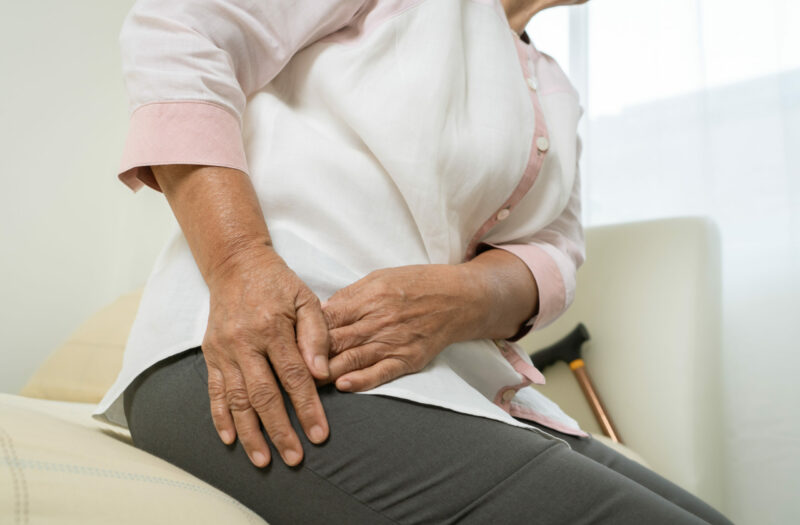Key Takeaways
- Researchers find relationship between corticosteroid injection and incidence of rare condition in which the hip joint aggressively deteriorates in less than a year.
- Risk of rapidly destructive hip disease (RDHD) is higher following high-dose (≥80 mg) injection and multiple injections.
- Findings confirm the need for patients to discuss potential risk of corticosteroids with health care providers.
A corticosteroid injection can help relieve both inflammatory arthritis and osteoarthritis — though this commonly used treatment isn’t risk-free. Doctors have long known that corticosteroid injections have the potential to weaken the bone and the surrounding ligaments and tendons, especially if repeated frequently. Now research shows that such damage might be severe.
A new study, published in The Journal of Bone & Spine Surgery, focused on the relationship between these injections and the incidence of “rapidly destructive hip disease” (RDHD) — a rare, mysterious condition in which the hip joint aggressively deteriorates in less than a year. RDHD is characterized by rapid and progressive narrowing of the joint, bone degeneration (osteolysis), and collapse of the upper end of the thighbone (femoral head).
What Researchers Discovered
Researchers compared patients who developed this problem between 2013 and 2016 to learn about how corticosteroid injections might have played a role. They also examined data on patients who had total hip replacement surgery during that time for other reasons; this second group served as the control subjects.
According to their findings, there was a significant link between hip corticosteroid injections and the development of RDHD. However, the degree of risk varied substantially depending on how much corticosteroid medication each shot contained as well as the number of injections that each patient received.
The overall rate of RDHD following one or more corticosteroid injections was 5.4 percent. When this problem did develop, it happened, on average, about five months after an injection.
The authors determined that “the risk of RDHD following a single, low-dose [corticosteroid] injection is low, [but] the risk is higher following high-dose (≥80 mg) injection and multiple injections.”
What This Means for You
Researchers advised that patients should be counseled about the potential risk of corticosteroids and that “caution should be taken with intra-articular hip injections utilizing ≥80 mg of corticosteroid and multiple injections.”
The bottom line: Talk to your health care provider to find out if the benefits of corticosteroid injections outweigh the risks for you.
Get Involved in Arthritis Research
If you are diagnosed with osteoarthritis or another rheumatic disease, we encourage you to participate in future studies by joining CreakyJoints’ patient research registry, ArthritisPower. ArthritisPower is the first-ever patient-led, patient-centered research registry for joint, bone, and inflammatory skin conditions. Learn more and sign up here.
American Academy of Orthopaedic Surgeons. Osteonecrosis of the hip. https://orthoinfo.aaos.org/en/diseases–conditions/osteonecrosis-of-the-hip.
Hart G, et al. Rapidly destructive osteoarthritis can mimic infection. Arthroplasty Today. March 2016. doi: https://doi.org/10.1016/j.artd.2015.11.003.
Okike K, et al. Rapidly destructive hip disease following intra-articular corticosteroid injection of the hip. Journal of Bone and Joint Surgery. September 2021. doi: https://doi.org/10.2106/JBJS.20.02155.
Shu J, et al. Rapidly destructive inflammatory arthritis of the hip. Case Reports in Rheumatology. July 2014. doi: https://doi.org/10.1155/2014/160252.






